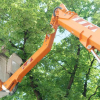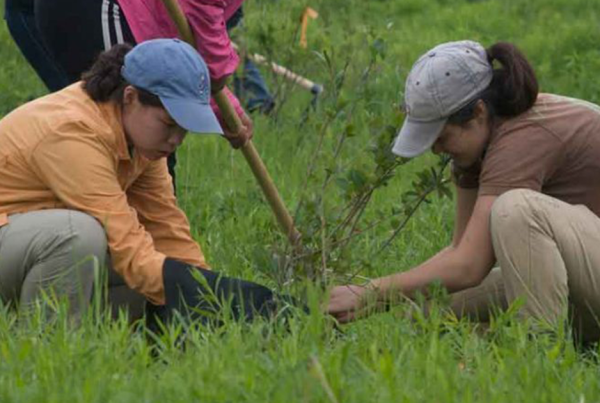
Okay, removing a tree stump isn’t exactly a simple task. To get right down to the point, the absolute worst thing you can do when trying to remove a tree stump is to do it on your own without the right tools or the expertise on how to go about the job in a safe and efficient manner. So after all that, do you still want to learn more about the different tree stump removal methods, or are you going the amateur route and try to do it with guns blazing?
If you want to approach the stump removal process the right way, below are a few things you need to know. You see, there are a number of ways to remove a tree stump, with varying difficulties and cost. Each method has its own positives and negatives you have to consider if you’re going to decide which stump removal technique to go with. So, let’s get to the nitty-gritty, shall we?
Stump Removal Through Chemical Process
There are chemical products that can speed up the rotting process of a dead tree stump so that it can be easily removed. These products are available at any local hardware store that sells gardening materials. A standard stump remover usually contains potassium nitrate to help accelerate the decomposition process. Others use chemical fertilizers rich in nitrogen to promote bacterial growth, which then facilitates the gradual decay of the stump.
Pros
- Easy to apply. All you need to do is drill deep holes in the stump, place the chemicals in the holes, and leave it to rot.
- It’s an inexpensive stump removal method. Most stump removers cost less than $20.
Cons
- This method is potentially dangerous, especially when there are children and pets around. You’re using strong chemicals here.
- The chemical process takes a long time to complete. It can take weeks up to a month, maybe even more.
Stump Removal Through Mechanical Process
Stump grinders are the most popular mechanical tool designed to remove tree stumps. These machines have sharp rotating teeth that can easily grind through dead tree stumps like butter.
Pros
- You can go through the stump removal process rather quickly using the equipment.
- It doesn’t require a high skill level to operate properly.
Cons
- Rental units are relatively smaller, and less powerful, compared to commercial versions. So it may take more time and effort than you expect to complete the task.
- Rental versions are mainly designed to remove one or two tree stumps that are less than 10 inches in diameter. Anything more than that and you’re in trouble.
Stump Removal Through Manual Process
If you feel like working up a sweat, then manually digging out the stump will surely give you a great workout. All you need is a shovel for digging, some type of saw for cutting up the roots, a pickaxe for wrenching and softening the soil, and protective gear.
Pros
- This is a cost-effective method for removing a tree stump.
- It can give you a tough cardiovascular workout.
Cons
- It’s a physical and potentially dangerous job. You can easily injure yourself if you’re not careful.
- This process is only effective if you’re dealing with a relatively small tree stump. Trees that have huge roots that go really deep into the ground will not be easy to remove manually.
Stump Removal Through Natural Process
Here’s a nice alternative for removing tree stumps: just let it decompose naturally. If you find that the stump doesn’t really bother you that much, just leave it in the ground to rot.
- Covering it with fertilizer, soil, or even mulch should help speed up the decay as fungus and bacteria start to flourish. In several months, the stump can easily be removed with minimal effort.
Avoid Removing Stumps With Fire
Hey, if you can afford to hire a professional to have a tree removed from your property, certainly a few extra bucks to remove the stump shouldn’t be a problem, right? Contact American Arborists today!
Using fire to remove tree stumps is a popular method, but it’s not advisable. It’s potentially dangerous and the fire could easily get out of control. And using your pickup truck to pull the stump out is really an amateur move. It’s still best to contact a professional to help with the removal process.










